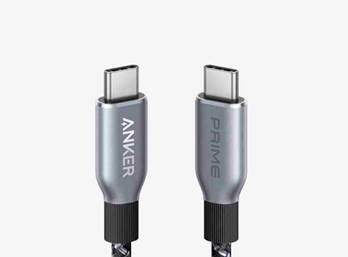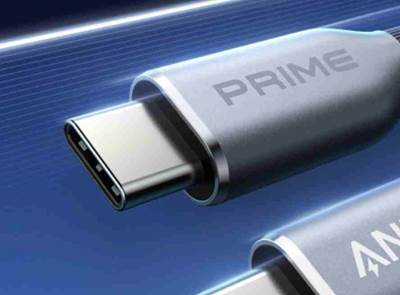USB connectors are the backbone of modern
charging and data transfer. From powering smartphones to syncing hard drives,
these versatile plugs keep our devices connected. But not all USB connectors
are created equal. Understanding the different usb types helps ensure you choose the right
cable for speed, compatibility, and efficiency. One standout for power and
performance is the Anker Prime USB-C to USB-C Cable (240W, Upcycled-Braided)—a durable, eco-conscious cable built for
the next generation of fast charging.
Common USB Connector Types and Their Use Cases
USB-A: The Original Standard
USB-A is the most recognized USB connector.
With its rectangular shape and one-sided plug, it has been the standard for
PCs, TVs, and wall chargers for over two decades. While still widely used,
USB-A ports only support older data and power standards. Most deliver up to 12W
for charging and up to 480Mbps transfer speeds using USB 2.0. USB-A connectors
are typically found on keyboards, flash drives, and charging blocks. Though
still functional, they are gradually being replaced by USB-C due to faster
performance and reversibility.

USB-B: For Printers and Larger Devices
USB-B connectors are square-shaped and
commonly used in larger peripherals like printers, scanners, and external hard
drives. There are also mini and micro versions of USB-B, found in older cameras
and handheld devices. USB-B cables are more niche now, mainly used in office
equipment. Their design doesn’t support newer fast-charging or high-speed data protocols, so they
are slowly being phased out. If you need to connect modern gear, USB-B likely
won’t meet your speed or
power expectations.
USB-C: The All-in-One Solution
USB-C is the universal connector of the
future. Its oval shape is reversible—so you can plug it in either way—and it supports fast charging, ultra-fast data transfer, video
output, and even audio. The best part: USB-C adapts to your device. Whether it’s a phone, laptop, or tablet, one cable
can do it all. A premium example is the Anker Prime USB-C to USB-C Cable
(240W). With support for up to 240W of power, it handles everything from
smartphones to high-performance laptops. It also features upcycled-braided
materials, delivering both durability and sustainability. Unlike typical USB-C
cables, the Anker Prime cable meets the latest USB PD 3.1 EPR (Extended Power
Range) standards. That means you can charge the latest MacBook Pro, gaming
laptops, and USB-C monitors with a single, fast, and safe cable.
Why the Right USB-C Cable Matters More Than Ever
Not all USB-C cables offer the same
charging capacity. Many top out at 60W or 100W, which may not be enough for
larger devices. The Anker Prime USB-C to USB-C Cable delivers 240W, making it
ideal for demanding gear. This cable adjusts intelligently to match your device’s power needs. So whether you’re charging a low-power accessory or a
workstation laptop, it delivers optimized charging without overheating or
overloading your device. With high-power USB-C charging becoming the norm,
choosing a cable with certified capacity and safety protocols is essential. Durability
matters. Cheap cables fray easily and underperform. The Anker Prime Cable
features upcycled-braided construction, making it resistant to wear, tangles,
and daily use. The eco-conscious materials align with modern sustainability
goals without sacrificing strength or flexibility.

Conclusion
Understanding USB connector types helps you
make better decisions about cables, adapters, and ports. USB-A and USB-B still
have a place in certain setups, but USB-C is the clear winner for speed,
versatility, and future-proof performance. For a USB-C cable that checks every
box—power, durability,
and eco-friendliness—the Anker Prime USB-C to USB-C Cable (240W, Upcycled-Braided) leads
the pack. It’s designed for users who need more than just basic charging. With
240W fast charging, reliable build, and planet-conscious design, it’s the cable that meets the demands of
next-gen devices.
